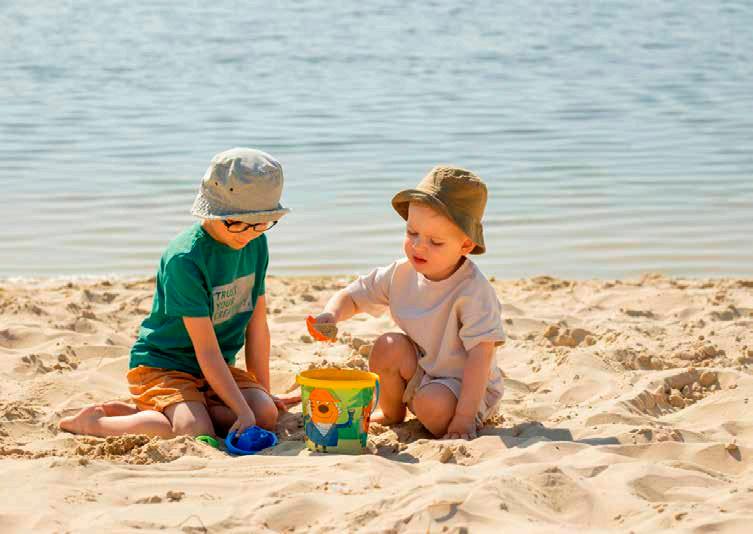
3 minute read
WATER SAFETY TIPS FOR CHILDREN WITH AUTISM
BY JOCELYN COOK
IT’S SUMMERTIME, which typically means spending a lot of time outside. And with pools open and all the lakes here in Michigan, that often means activities in and around water. While swimming and playing in water are fun and great exercise, it can also be very dangerous. Because of this increased danger, water safety for children with autism, or any child, is extremely critical.
Why water safety is so important for children with autism
Children with autism, and other special needs, often wander, which is very unsafe if they get close to water unsupervised. Children may also be unaware of things such as water depth, water temperature, water currents, or slippery surfaces.
Children with autism are 160 times as likely to die from drowning as the general pediatric population. Due to this sobering statistic, we’ve compiled some tips and ideas to teach water safety to your child with autism.
The importance of swimming lessons
Every child should learn to swim, and for children with special needs, it’s important the skill is taught in a way that resonates with them. Make sure the teaching environment is not too distracting or overwhelming for your child.
Provide reinforcers
It’s a great idea to have “reinforcers”, or preferred items, available when your child performs important or difficult tasks related to water safety.
Visual learning of water safety
Use video narratives, social stories, or visual routines to teach water safety. Many children with autism spectrum disorder are rules-driven, so use that to your advantage. Set specific rules for how they are to behave around waterthen practice those rules in real world situations.
Use appropriate swim gear
Even if your child knows how to swim, it’s still a great precaution to use a life jacket or flotation device around water, whether they are planning on swimming or not. It can also offer reassurance when attempting a new skill and teaching independence.
Teach key information
Because a high percentage of kids with autism wander, make sure your child knows his or her name, address, and phone number in the event he or she is separated from you. If your child does not speak, make sure they wear a bracelet, tag, tattoo, etc. with their name and your name and phone number.
Set up your environment vigilantly
Even if you feel confident that your child thoroughly understands the rules of water safety, accidents can still happen. Utilize fences, gates and alarms when preparing your environment near water and keep toys of interest away from water.
Communicate with others
Talk with your neighbors, whether at home or on vacation. Ask them to contact you immediately if they see your child wandering alone outside. Even if you don’t own a pool, but your neighbors do, ask them to be aware of your child wandering near their property.
We hope these ideas help you implement water safety for your child with special needs. We want everyone to have a less stressful and more enjoyable summer!
To learn more about the comprehensive autism services at Healing Haven, visit thehealinghaven.net.













